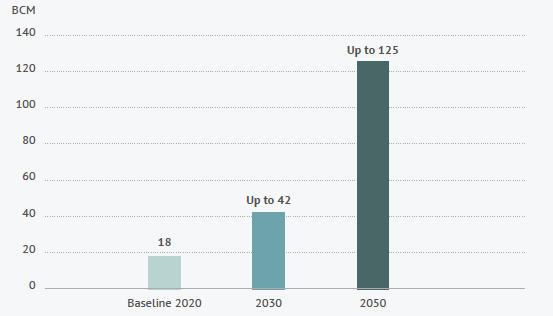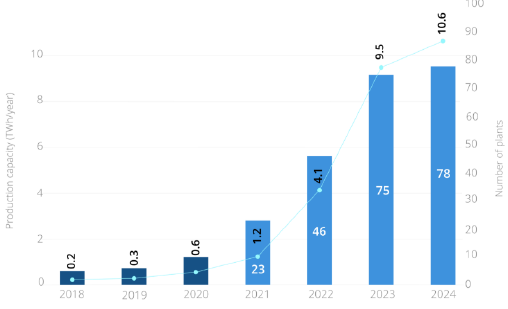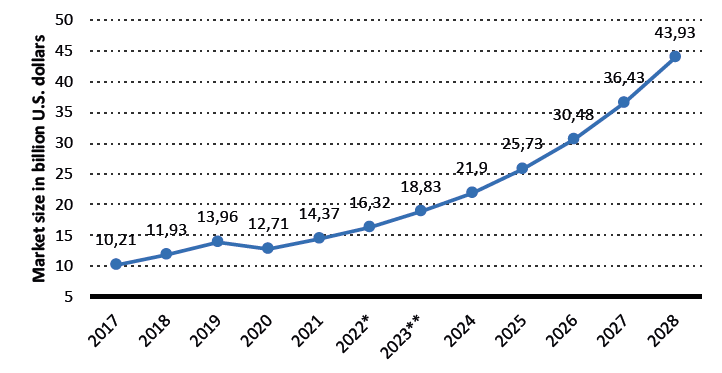Nesetten GmbH
Our DNA
At Nesetten, innovation is at the heart ….
Nesetten as a deep tech startup…
Nesetten as a hardware startup…
Nesetten as an impact startup…
Bio-LNG and LNG market for Nesetten’s website
The global demand for natural gas continues to rise, driven by its use in power generation, industrial processes, and transportation. LNG production and export have surged, but while large-scale LNG projects dominate, there is significant untapped potential in the micro- and nano-scale LNG markets. These niche markets cater to environmentally friendly fuels in sectors like shipping, trucking, and off-grid power generation.
The small-scale LNG (ssLNG) market is expected to reach USD 2.6 billion by 2025, serving industries such as marine fuel, heavy road transport, and off-grid power. Micro- and nano-scale LNG systems offer a cost-effective solution for remote areas, where traditional gas pipelines are impractical. Moreover, bio-LNG presents a net-zero emission fuel, with the global bio-LNG market projected to grow at a 41.1% CAGR through 2030, potentially covering 61% of the EU’s gas demand by 2050.
In the transport sector, LNG trucks are gaining traction. Since the early 2010s, the European fleet of LNG-powered trucks has grown to 12,000 units. By 2030, this number is expected to rise to 280,000, requiring around 100 TWh of fuel, with bio-LNG meeting 40% of that demand. This demonstrates the growing relevance of sustainable transport solutions.
Additionally, the microgrid market, valued at over $9 billion in 2020, is forecast to grow to $40.5 billion by 2029, driven by demand for resilient, uninterrupted power. This growth reflects the shift toward decentralized energy solutions, where bio-LNG and microgrids will play an increasingly important role, particularly in off-grid and remote areas.
Environmental impact
Nesetten enables both positive environmental and social impact by improving access to and distribution of cryogenic fuels, primarily (bio-)LNG.
By supporting the transition towards 100% bio-LNG energy systems Nesetten can enable
the reduction of up to 7Mt of CO2 annually by 2030*
*Calculation based on bio-LNG replacing diesel as a fuel source and Nesetten’s SOM.

#7 Affordable and Clean Energy
Improving access to and increasing the affordability of (bio-)LNG for remote, extreme, and developing areas.

#9 Industry, Innovation, and Infrastructure
Upgrading and retrofitting industries to make them more resilient, sustainable and resource efficient through the adoption of (bio-)LNG, potentially decreasing CO2 emissions per unit of production.

#11 Sustainable Cities and Communities
ncreasing air quality by reducing SOx, NOx, particle emissions as a result of switching from diesel, marine gas oil, and heavy fuel oil to LNG. The added-value for a regional economy i.e. locally produced fuel creates economic benefits for a local community and brings closer the vision of locally produced energy to power the region.

#13 Climate Action
Reduction in direct process emissions resulting from cryogenic bulk manufacturing.
Enabling reduction in CO2 emissions by making it possibleto replace comparatively higher emitting forms of energy.
Enabling the growth of the carbon negative bio-LNG industry.
Providing the infrastructure for decentralized/micro energy grids to increase resilience and adaptability in cases of natural disasters and climate- related hazards.







3rd order impacts
Nesetten will also have a variety 3rd order impacts if the technology is used to provide access to energy (electricity, heat, cooking) in emerging and underserved areas (especially subsaharan Africa), potentially positively impacting 10 different SDGs:
#1 No Poverty, #2 Zero Hunger, #3 Good Health and Well-being,
#4 Quality Education, #5 Gender Equality, #7 Affordable and Clean Energy, #8 Decent Work and Economic Growth, #9 Industry, Innovation and Infrastructure #11 Sustainable Cities and Communities, #13 Climate Action, #15 Life On Land







3rd order impacts
Nesetten will also have a variety 3rd order impacts if the technology is used to provide access to energy (electricity, heat, cooking) in emerging and underserved areas (especially subsaharan Africa), potentially positively impacting 10 different SDGs:
#1 No Poverty, #2 Zero Hunger, #3 Good Health and Well-being,
#4 Quality Education, #5 Gender Equality, #7 Affordable and Clean Energy, #8 Decent Work and Economic Growth, #9 Industry, Innovation and Infrastructure #11 Sustainable Cities and Communities, #13 Climate Action, #15 Life On Land




